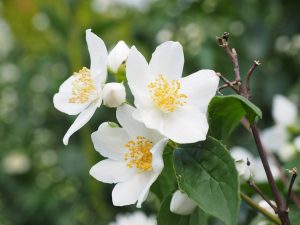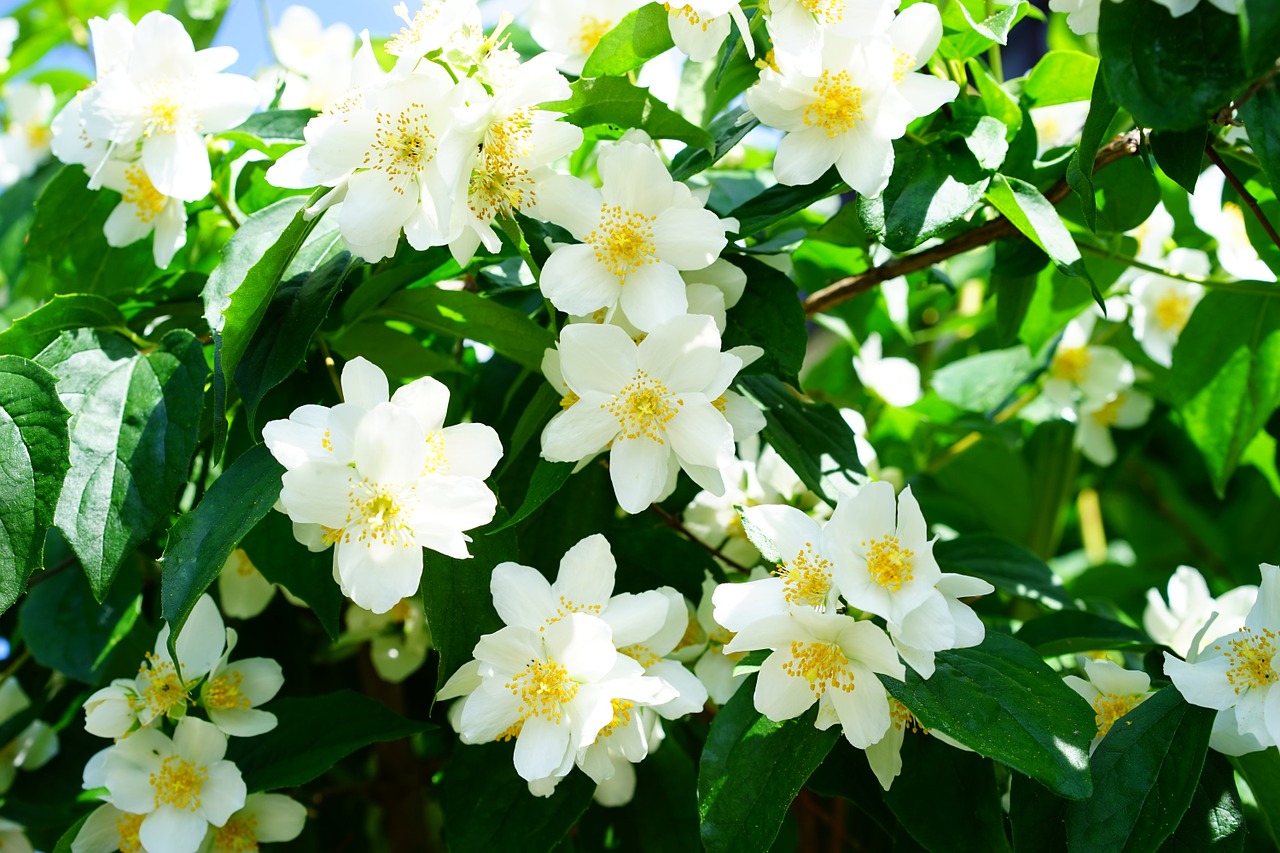Last Updated on February 15, 2022 by Real Men Sow
The Mock Orange (Philadelphus) are deciduous and lose their leaves in winter. The shrub produces its flowers for approximately five weeks, depending on the local conditions. Because they are beautiful in bloom, but don’t require much attention, you’ll see them in parks or on estates.

Where to Grow Mock Orange to Make it Thrive?
Mock Orange can grow well in a variety of soil types, from clay soils to well-drained light soils. They have deep roots and are not affected by drought. If you want them to produce the best flowers, grow them in full sun or partial shading.
It will require watering for the first year if you’re planting a new plant. They can withstand extreme windy conditions and are extremely frost-resistant. They sound ideal shrubs for most of the UK, and that is certainly the case.
Flowering and Foliage
When fully flowered, the flowers cover the majority of the shrub. Pure white flowers are the most popular variety. This hardy shrub, which is very common, is a mid-to-dark green color. It is not particularly striking and is mainly grown for its flowers.
These plants are easily available in potted form from most garden centers and grow well in large-sized containers.
As with all pot plants, water them well and feed them three times per year with bone and blood. This will make a great potted shrub. The best way to prune them is to gather the stems in August and trim the top third.
Pruning Mock Orange
A Mock Orange should be pruned in August, soon after its flowers have finished. Although much could be said about the pruning techniques for this shrub, a hedge trimmer and a pair secateurs are all you need to keep it in good shape. They can grow very vigorously, so the shrubs are usually cut to 1m/3ft in height. This will give you a shrub that is 1.6m/5ft tall when it flowers next year.
Pests and Diseases
This shrub is resistant to most diseases. They do suffer from black fly, particularly when they are grown in containers. They are most likely to be seen in the middle of the flower’s blooming period, between late May and early June. You can see them on several stems in the photo below.
The black fly usually gathers at the stem ends and is relatively easy to remove with a gentle spray of water. Systemic sprays are another option. Make sure to read the directions carefully, especially regarding the timing of spraying. Spraying in the evening reduces, but not completely eliminates, collateral damage to beneficial insects like bees.


